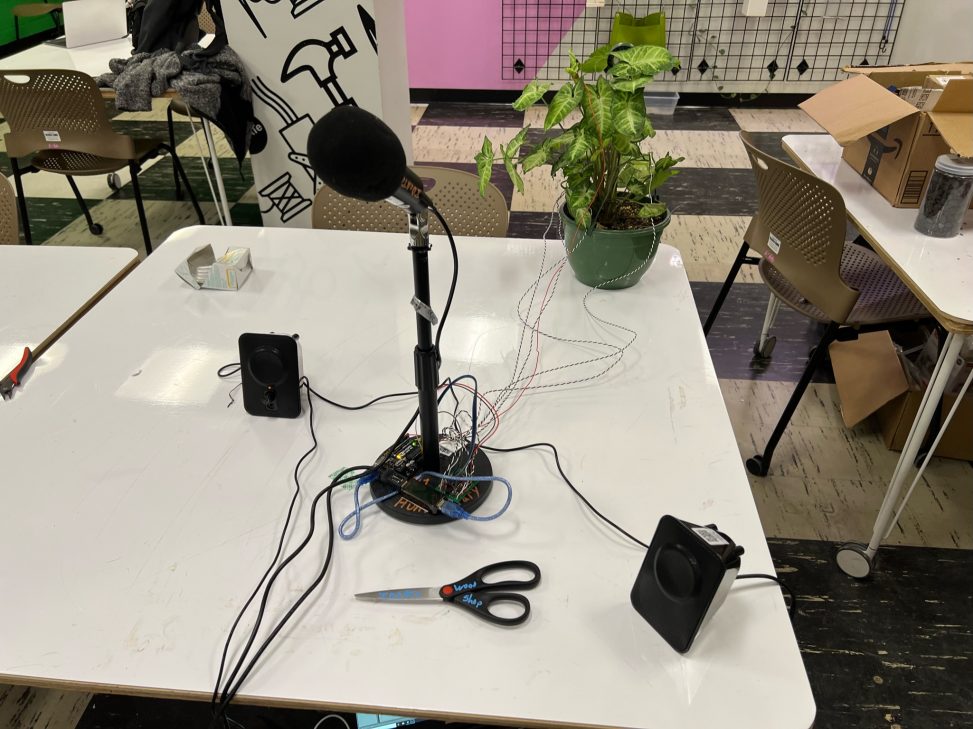Thoughts of a Plant explores the differences and similarities between plants and people by setting up an opportunity to listen to and interact with the internal electrical signals of a plant.
Normally, plants exist in the background and slowly grow over time, responding primarily to changes in sunlight, moisture, temperature, or wounding. Humans on the other hand respond quickly to changes around them and constantly communicate through speech to get food, socialize, and generally enact agency. This project is intended to give an interactive voice to plants.
The user listens to an ambient acoustic chord whose timbre changes and evolves with the plants electrical biosignals. A microphone provides the opportunity to interact with the biosignals by inducing a complementary signal into the plant based on your speech. This allows the user to create fast-changing effects on the timbre and see how their own speech is transduced through the plant amplification circuit. The intended effect is to contrast our short-term speech patterns against the slower changes of the plant’s own signals.
The plant is set up nondescriptly on a table with visible electrical probes and amplification circuitry. A prominent microphone invites visitors to speak into the plant and listen to the reply.
Process
Thoughts of a Plant uses electrical probes attached to the stems of the plant to measure small voltages across the leaves. The signals are sent through an arduino equipped with a custom amplifier circuit to a software synthesizer and modulate parameters such as filter cutoffs, resonance, noise, detuning, overdrive, and a few other parameters. This means that slight changes in the plant’s bioelectrical signals modify the timbre of the ambient tone. The chord itself is a Minor 7th played from through a dual-sawtooth synthesizer to produce a somewhat dark, warm ambient tone. Additional instruments provide relatively static harmonics to build out a larger acoustic atmosphere.
The primary challenge here was actually measuring the plant’s bioelectrical signals. Most of the work for this project went into designing and constructing a very high input-impedence amplifier/filter circuit so that I could measure the small signals on the plant. I ended up using a noninverting op-amp circuit with a first order low-pass filter, with a gain of 10 and cutoff frequency of 100Hz respectively. A virtual ground allows the measurement of negative signals by biasing the output signal to 2.5v. This turned out to be very difficult to implement in practice, and took most of my time. The hardest part is that plant signals evolve very slowly (noticeable change takes a couple minutes, and significant change takes 10-20 minutes), so it takes a long time to verify that the system is working and measuring plant data rather than arbitrary noise.
The synthesis was fairly simple, but interfacing with the arduino was surprisingly buggy and difficult using Max For Live. Max would often cause ableton to freeze and mapping signals (ie, arduino A0 to filter cutoff) was unreliable and lacked customization.
I think I ended up with a good probing setup, but I wish I had used custom sound synthesis instead of Max For Live. I ended up with very little control over the timbre changes, so some effects were far more sensitive than others. The microphone input in practice was fairly rough, since Max For Live’s envelope follower module was very buggy and unreliable, so I couldn’t tweak it easily. I wish I had processed the user audio in a more interesting way, such as with an fft or slowing down the response. I also think that it was generally unclear what role the microphone played in the setup, so a little bit of signage and better introduction could have helped there.
Final Images
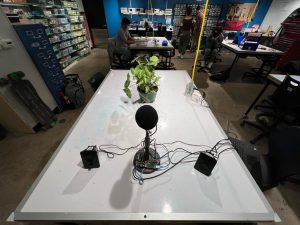
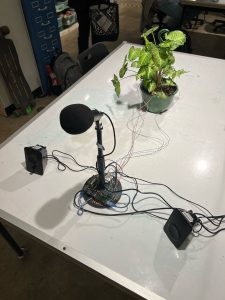


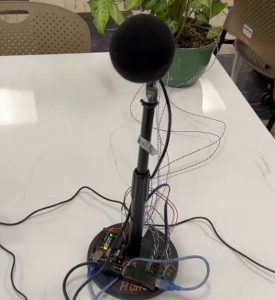

Audio of the plant synthesizer in action:
Process Images:
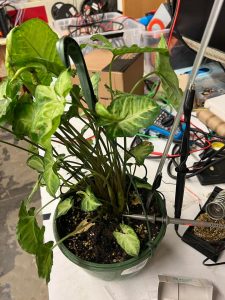
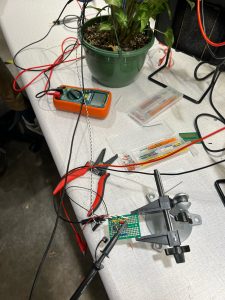
The measured signal evolves slowly over 10-20 minutes:
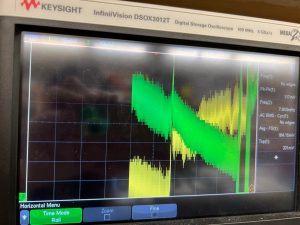

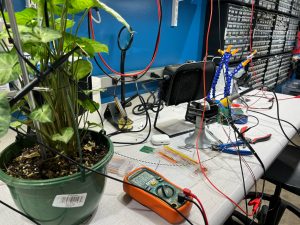
A video of the synthesizer modulation in ableton using Max For Live:
Code:
There was no original “code” for this project. A simple ableton synthesizer was run and arduino code was just the Max For Live client sketch.
